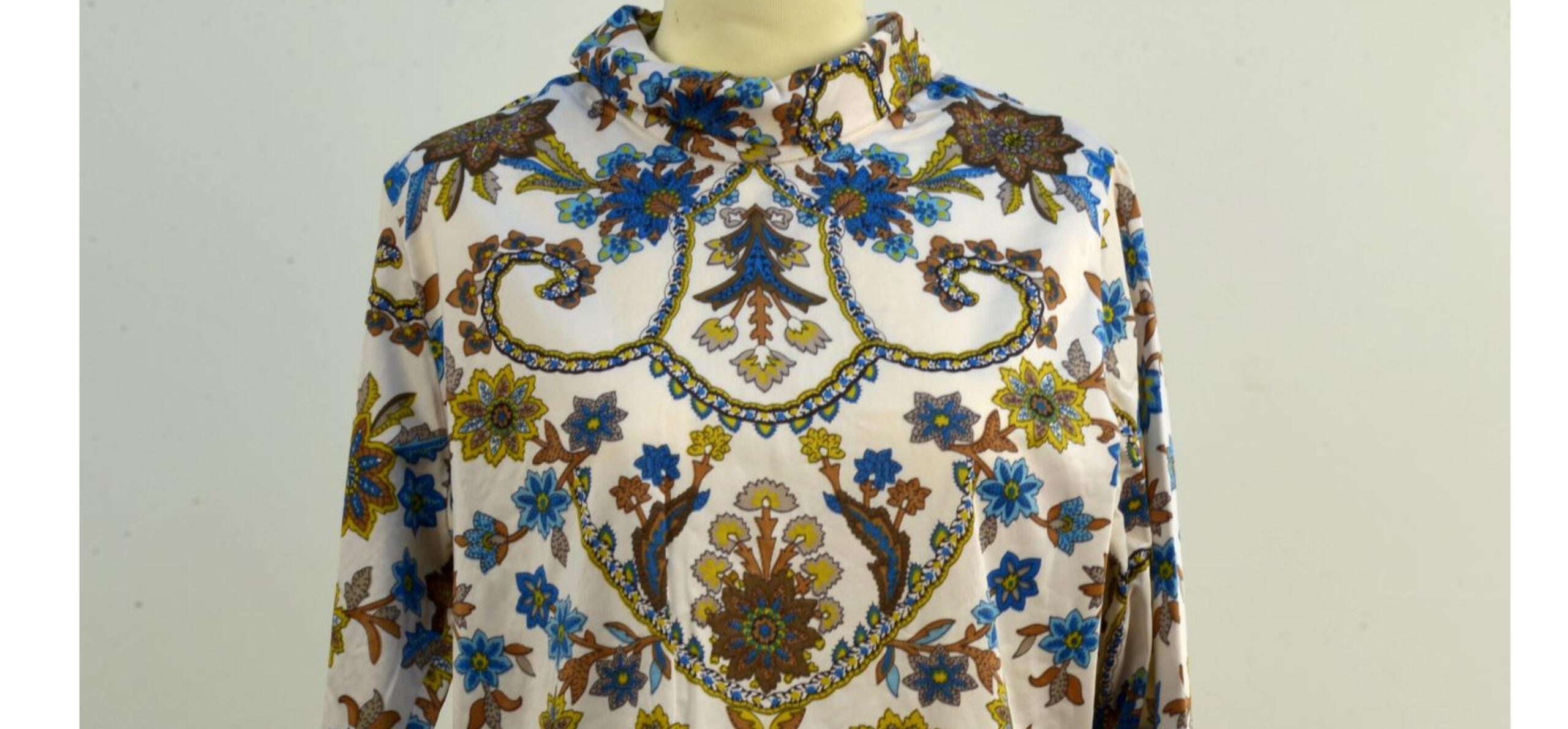Everybody needs clothes, but have you thought about the effect on our planet?
The clothing industry has a large environmental impact because of its methods of production, high levels of consumption and complex global supply chains. According to McKinsey research it is responsible for 4% of global carbon emissions.
In this blog, part of Our Green Stories, learn about textile fibres, with examples from our collections, and ways to make more sustainable choices.
What is fast fashion?
Fast fashion is the production and marketing of low-cost, high-volume clothing. Brands regularly launch new clothing ranges, which both drives consumer purchasing and responds to it. McKinsey reports in 2014 the public bought 60% more clothing than in 2000 but kept it for half as long.
Can clothing be sustainable?
Clothing is made from a variety of fibres, some more sustainable than others. Sustainable fashion means clothing made using less water and fertilisers in production, fairly paying workers, having safe working conditions, the clean disposal of chemical dyes, being free from animal cruelty, and producing long-lasting garments that are ultimately recyclable or biodegradable.
What textile fibre should you choose because every option has an impact?
Natural fibres
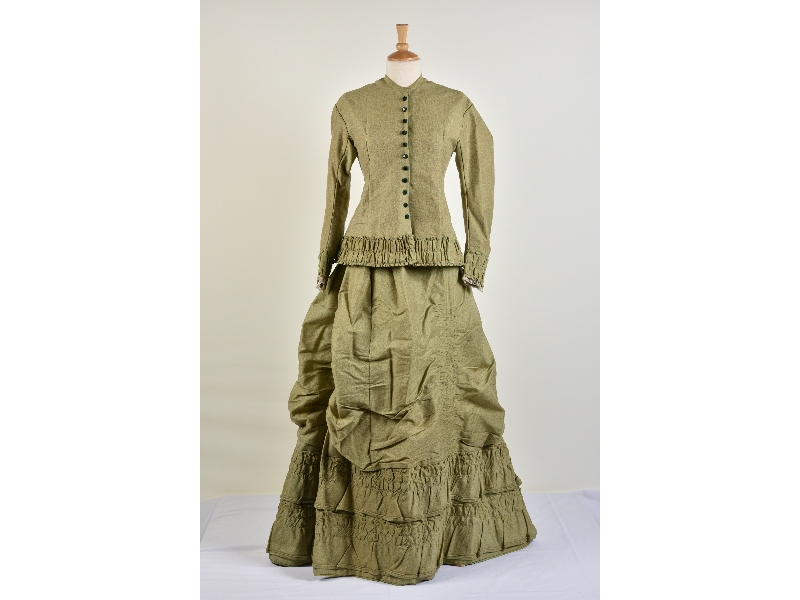
Green wool bodice and skirt, Object no. 1966.189.1.
This green wool bodice and skirt dates from between 1874 to 1876. Historical designs can be accurately dated by comparing features of the outfit with fashion publications of the time. This day dress was an expensive purchase and has been worn and cared for over the years.
Wool is a natural product made from the fleeces of animals. Sheep’s wool can be rough so is sometimes combined with other materials, making it more difficult to recycle.
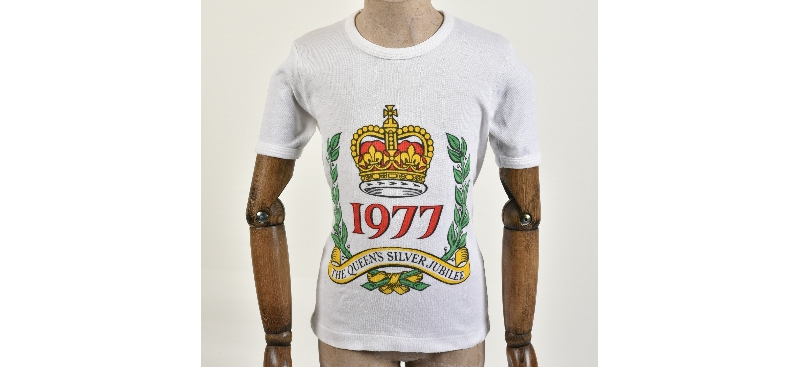
White cotton child's t-shirt celebrating Queen Elizabeth II's Silver Jubilee. Object no. 2001.171.108
Cotton is a natural fibre that comes from the seed pod of the cotton plant. It is the most common natural fibre for clothing. The growing plant has a high water demand and farmers rely on fertilizers and pesticides.
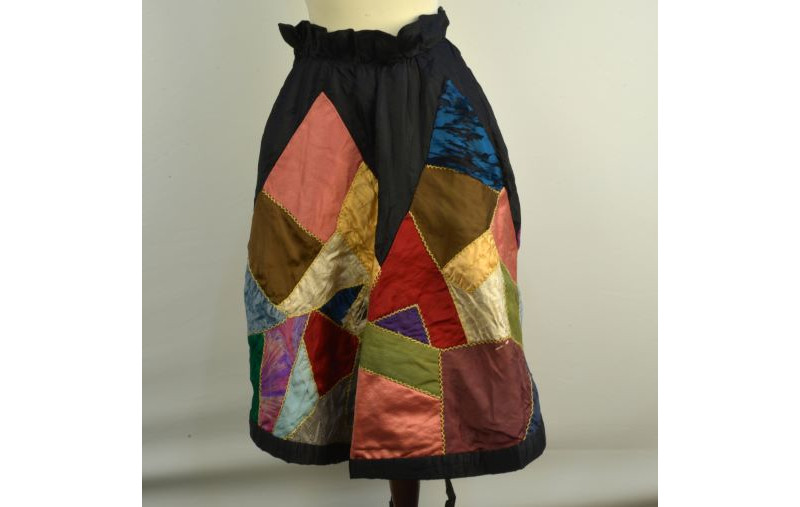
Apron with silk patches, Object no. 1969.226.1
This patchwork apron has patches of colourful silk. Silk is a fine material which, as this apron shows, can degrade and fray.
Silk is produced from a natural animal protein, fiberon, made by silkworms. Silkworms are the larvae of a moth (Bombyx mori). The silk fibres they produce create a delicate and very expensive fabric.
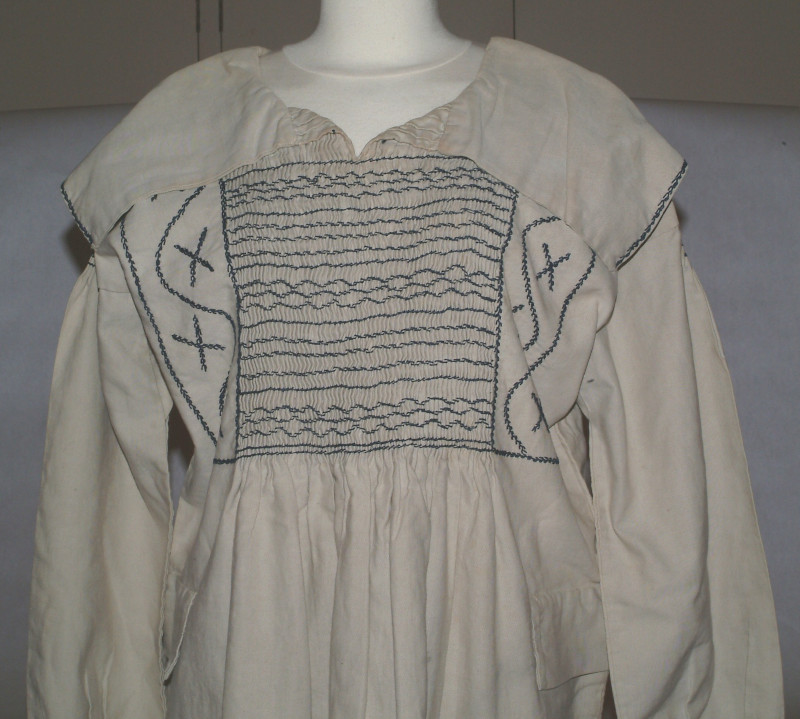
Linen smock with decorative smocking, Object no. 2005.155.1
This linen smock is a copy of earlier clothing. Smocks were worn by farm workers both in the field and for formal occasions in the eighteenth and nineteenth centuries.
Linen fabric is made from the flax plant. Linen is a more sustainable fabric because the growing process uses little water, it can be grown in Europe, the whole plant is used, needs few herbicides and pesticides and it is strong textile that has a long life.
Synthetic fibres
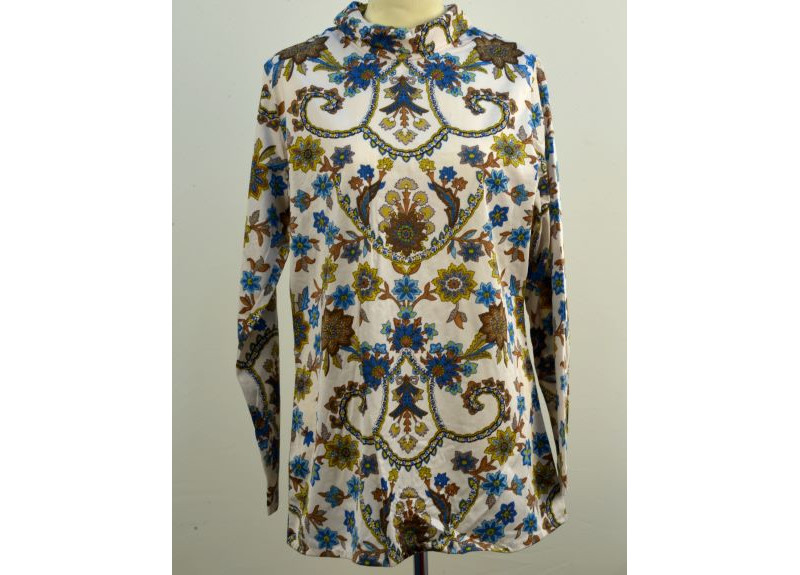
Printed nylon blouse, Object no. 1997.102.23
This printed nylon blouse was made in Britain in the 1970s. Nylon was a ‘wonder’ fibre and incorporated in many items of clothing.
Polyester, elastane, acrylic and nylon are synthetic fibres made of plastic derived from fossils fuels. These man-made fibres can take a long time to biodegrade, but they are hard wearing and durable. These fabrics shed microplastics during washing, polluting the water system and into the food chain.
New fibres
New research in alternative natural fibres is creating more options. Fast growing bamboo creates strong and soft material. Corn fibre is created through fermentation of plant sugars creating a material similar to synthetic but fully compostable.
Recycled fibres
Fibres made from recycled plastics could be seen as the more sustainable choice. These fibres are made from polyethylene terephthalate (PET) plastic, most commonly from bottles. Plastic bottles are a closed loop recycle system where bottles can be recycled up to 10 times but making them into clothing takes away this recycling ability.
Repaired clothing
Repairing and repurposing clothing are examples of responsible consumption. During the Second World War and in the years afterwards new clothing was rationed, meaning everybody was limited in what they could buy, and had to provide tokens issued by the Government, along with money to purchase clothes. It was therefore essential that people looked after their clothes and repaired any damage. Nowadays visible mending, when darns and patches are purposely decorative, is becoming a popular activity.
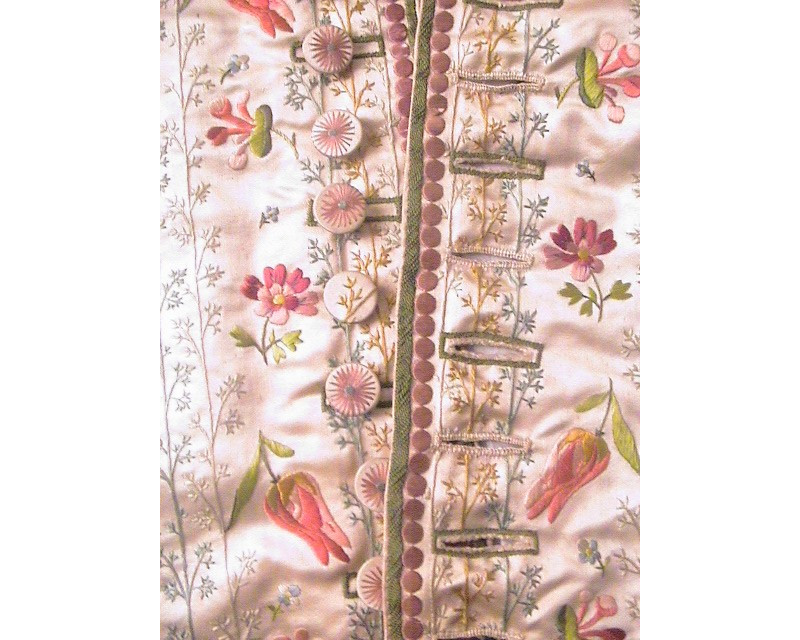
This detail of a Georgian silk waistcoat shows its elaborate embroidery. The plain back of the waistcoat has laces to expand the garment, thus allowing the embroidery to be seen as the wearer grew. Object no. 1928.8.1

Simply put, people need to buy less clothing. Can you make a simple repair or sew on a button to make a piece of clothing last longer? If buying clothes, why not buy second hand, try a vintage clothing sale or a charity shop? Think about where clothes come from – have they travelled across the world? What material is it made from? Is it ethically and environmentally sustainably sourced?
